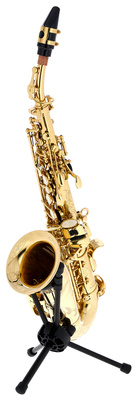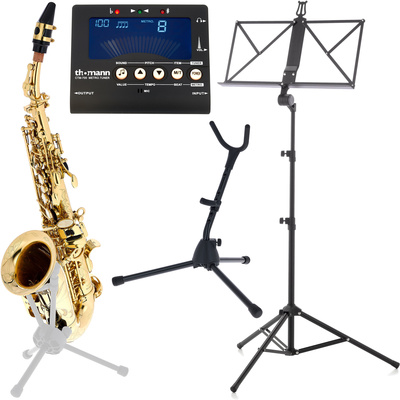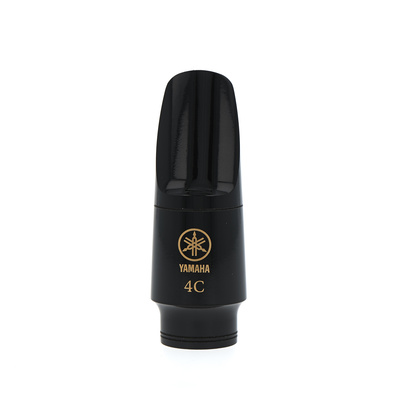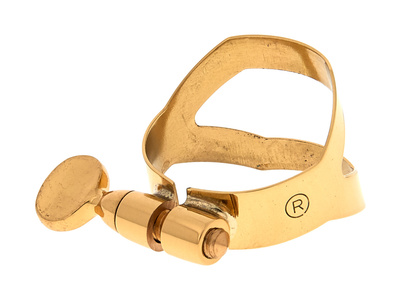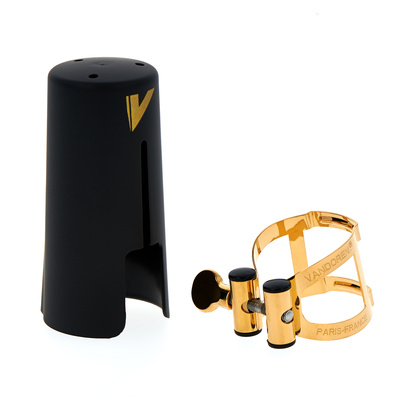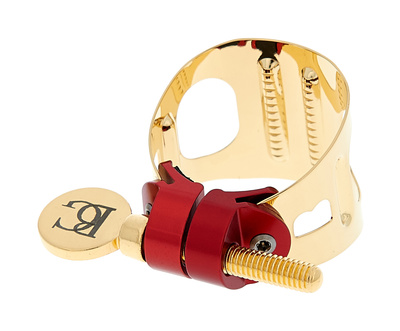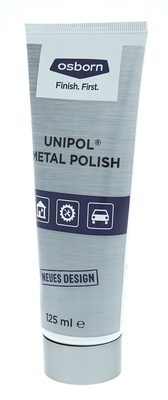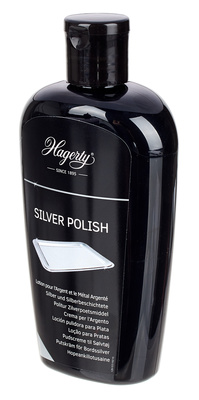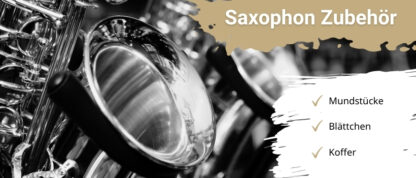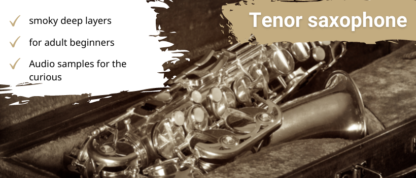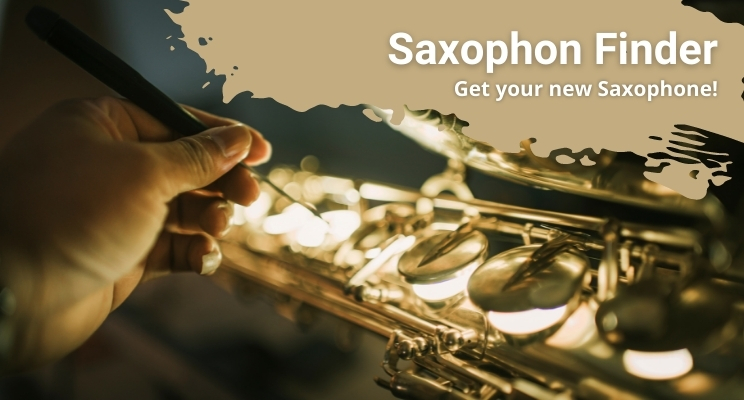Soprano saxophones are popular in both big bands and jazz ensembles because of their expressive and assertive sound. The soprano is one of the highest sounding instruments in the saxophone family and is great for melodic lead passages in all kinds of music.
For whom is the soprano saxophone suitable?
Despite its pleasantly handy size, the soprano saxophone is less suitable, at least for absolute beginners. Anyone who has already mastered the alto saxophone and is looking for an attractive second instrument is in exactly the right place. However, the high pitch is the reason why the soprano is more difficult to play at the beginning. The tone is not quite as stable as on the alto saxophone, but can easily be distorted by an unsteady embouchure. Unpleasantly shrill, almost nasal tones then arise. With a lot of enthusiasm and regular practice, however, it can become your personal dream instrument.
What does a soprano saxophone sound like?
The soprano saxophone is one of the shortest saxophones and is tuned in Bb. This means that it is a transposing instrument where the note played from the reed does not correspond to the sounding note. It is an octave and a few semitones higher. If a C is picked on a soprano saxophone, a Bb is actually sounded. The total range officially extends from A-flat to E-flat (e3), but it also depends very much on the virtuosity of the player and can be narrower or wider depending on ability.
Soprano saxophone: function and construction
Originally, the soprano saxophone was designed and patented by Adolphe Sax with a straight, conical bell. This makes it look a little more like the clarinet than the other saxophones. Due to the short length of approx. 60 centimetres, the body is made of one piece. The air column thus has a stable path in the instrument, which makes it sound fuller and better overall, which is especially important in the higher registers. It does not have a separate neck, only the mouthpiece is attached for playing. However, the embouchure and support (controlled and continuous breath) must be strong enough with the straight construction to produce reliable and powerful tones from the instrument.
Curved soprano saxophones
In fact, there are also curved soprano sopranos here and there. These are especially popular with younger players or beginners, as they are more reminiscent of the familiar saxophone representatives and thus accommodate the familiar handling. They are also much shorter and take up less space in the case.
If you want to record your playing, it is also easier to position the microphone in front of the bell in such a way that all the timbres of the instrument can be captured. The sound flows not only from the front-facing bell, but from all the open tone holes along the body.
Can the neck on the soprano saxophone be bent?
Another very clever design is a predominantly straight body, which, however, has a slight bend at the height where an neck would normally be. The advantage is that the curved neck forces the air into the instrument with greater pressure, which means that the player does not have to apply too much embouchure. This makes playing a little more effortless with the same fabulous sound quality and is certainly worth considering for soprano beginners.
Some manufacturers (such as Thomann here) also provide their instruments with interchangeable necks, so you can choose which sound and playing characteristics suit you.
Buying criteria for a soprano saxophone
Buy a saxophone in the shop

Of course, it is easiest to buy a new Saxophone, because then you get a guarantee or warranty on it and you can be sure that the instrument will play perfectly. Some players like to go to instrument exhibitions in order to play extensively. If the journey is too far or if you prefer to test different saxophones at home in a familiar environment, online dealers like Thomann are good partners. You can test every instrument for 14 days before the purchase becomes legally binding. If you find out after the legal period of 14 days that the instrument does not suit you, you can return it to Thomann within 16 days. The 30-day period will certainly be enough for you to get a complete picture of your dream instrument.
Hire purchase options for saxophones
Another possibility to get a good instrument without having to spend large sums of money directly is hire purchase. In this case, you enter into a rental contract for the instrument of your choice with a local music dealer or an online dealer. For a fee of 20-40€* per month, you can play the instrument. Of course, you should treat a hire-purchase instrument as carefully as possible, but that makes sense with any instrument. If you wish, the contract can be set up in such a way that you pay off the full purchase price for the instrument piece by piece through the rental fees. This deal is especially worthwhile if you are not yet sure whether the soprano saxophone suits you and you want to continue playing it. Hire-purchase deals are also ideal for children who are just starting to learn the saxophone. Good online addresses for rental purchases are:
Buying a used soprano saxophone from a private seller – a good idea?
Before you rush into the second-hand market, we will give you some tips on what you should look out for. Especially for beginners, it is often not obvious whether an instrument is still in good and comfortable playing condition despite its age or not. Therefore, it is advisable to bring someone with you to the inspection who already has a little more experience. For example, your saxophone teacher or at least someone who has many years of experience with the instrument is ideal. You should take your time to examine the instrument carefully and try out all the notes. Be sure to take a tuner with you, because you should not rely on your hearing alone. A simple torch can also be helpful to find leaking keys.
Buy a soprano saxophone used
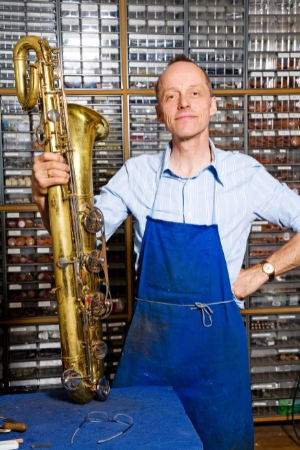
The safest way to buy a used instrument is to ask a specialist dealer who will give the instrument a general overhaul before passing it on to you. For example, worn keys are re-fretted and adjusted or the intonation of the saxophone is tested so that there are no unpleasant surprises. There are three companies throughout Germany that specialize in buying and reselling repaired old instruments and offer you the opportunity to buy great brand instruments at very fair prices. Especially if you don’t have much experience with buying instruments, but want to buy second-hand, we can recommend these providers with a clear conscience:
Equipment for the soprano saxophone

Since the soprano saxophone does not have a neck, the only parameters through which you can influence the tone are the mouthpiece, the reeds and the ligature (reed screw). Some argue about the influence of these components, but overall it can be confirmed that the different materials are perceived differently and that every artist has his or her preferences. Here again, there is an overwhelming jungle of possibilities that you can clear up with the help of a few questions.
Finding mouthpieces for soprano saxophone – but how?
Of course, most mouthpieces are for alto and tenor saxophones – simply because these two pitches are played most often in the instrument family. However, for most well-known or frequently sold mouthpieces, there is also a suitable counterpart for the soprano. The detail is then hidden in the name of the article, for example, the popular S80 C* beginner’s mouthpiece from Selmer is available with a different scale length (diameter of the bore) for both the alto saxophone and the soprano. Make sure you really buy the right mouthpiece, otherwise it won’t fit in the end.
What is important in any saxophone mouthpiece?
The most important size on the mouthpiece is its web opening. This is the name given to the gap that is created when the reed rests against the flat edge of the mouthpiece. Mouthpieces often have a designation like 4C or 6*. The number indicates how wide the opening is on a scale of 3 – 10. 3 is the smallest opening, 10 the largest. The smaller the opening, the less air you need and the easier it is to control the blade. The Yamaha 4C, for example, is THE standard mouthpiece for beginners and a good point of reference when looking for a suitable mouthpiece: 3 – 5 are the sizes of choice at the beginning.
A saxophone mouthpiece with a warm sound
As mentioned at the beginning, musicians disagree about whether the material plays such a big role, but nevertheless a few directions and preferences can be identified. Woody materials sound warm and somewhat dull, as do mouthpieces made of soft plastic or rubber. Mouthpieces made of metal or glass often impress with a clear sound rich in overtones, but sometimes sound tinny, reverberant or shrill to other ears. The bottom line is: the proof of the pudding is in the eating! In time, like many other musicians, you will have a whole collection of mouthpieces for every musical occasion – and of course your personal favourite mouthpiece!
Saxophone reeds for the soprano saxophone
The search for the perfect reeds is also a bit overwhelming at the beginning, simply because of the enormous mass of products. Most long-time players already have their favourite manufacturers and don’t need any help choosing the right reed thickness.
Generally, however, one would advise that a rather hard reed is played on a mouthpiece with a small opening (3 – 5) and a large opening (<7) requires a soft reed. The reed thicknesses are sold according to their hardness or flexibility. In order to make it as easy as possible for beginners to form their first notes, reed strengths of 1 and 2 are recommended at the beginning, rarely even 3 – and this despite a small orifice. Gradually you can try out your approach on harder reeds, but for the beginning a small opening with a soft reed is ideal.
Reed screws for soprano saxophones
Reed screws are available in all kinds of materials, just like mouthpieces. The most common are those made of rubber, metal or leather. While the metal is perceived by some musicians as hard in terms of sound, rubber and leather are especially popular with jazz musicians who want to bring out the warm component of the tones. Slightly dampening properties can also be useful for a soprano to make it sound a little softer.
Clean saxophone
In principle, with the soprano you have even found a particularly grateful representative of the saxophones, because small instruments are cleaned more quickly.
Since there is no neck, you don’t have to do anything here. Therefore, just take off the reed and the mouthpiece, dry or wipe both carefully and put them aside. Afterwards you should dry the bell several times with a squeegee. You will find this and all other utensils in your cleaning kit. Rub the outside of the entire body with a polishing cloth and, if necessary, treat it with a lacquer spray. For extra care, the tone holes can be brushed or cleaned with polishing gauze once a week.
The smallest saxophone is actually the soprillo, which is much shorter than the soprano. Also tuned to Bb, it starts at a pitch of a1 and reaches up to d4. This makes it sound even higher than the soprano saxophone, which roughly corresponds to a very high girl’s or woman’s voice. The soprano saxophone is therefore made much more often and has a wider distribution. This is why it is often mistaken for the smallest saxophone.
The soprano saxophone covers a range of notes from A flat to E flat 3 (e3). How high a player can intonate cleanly on it and whether he really gets to e3, however, depends very much on the individual skill of the player, but of course also on the quality of workmanship of the instrument.
There are some curved soprano saxophones, but they are much rarer. Adolphe Sax, the inventor of the saxophone, originally designed the soprano straight because the high intonation is somewhat more stable as a result. The air column inside then behaves similarly to that in a high clarinet. A hybrid form is a straight soprano saxophone with a slightly bent neck, which is more uncomplicated in response due to the bend.







